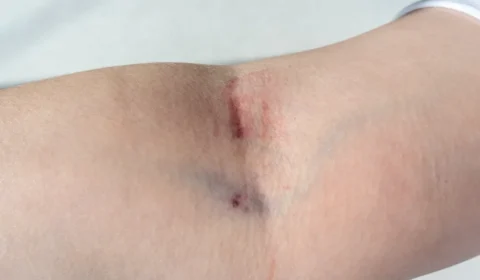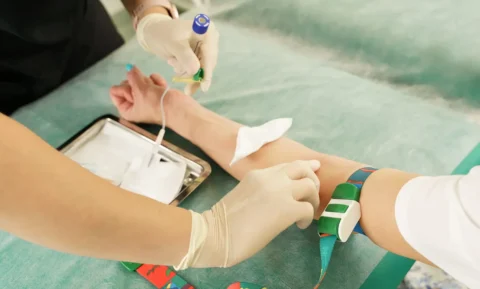Aesthetic treatments have developed into an important aspect of self-care and improvement, as more patients become interested in enhancing their appearance or maintaining their youthfulness. The demand for Botox, dermal fillers, and other treatments encouraged many medical professionals to pursue a career in medical aesthetics – starting by looking for an accredited aesthetics training course.
So what factors should medical professionals consider when looking for an accredited aesthetic training course? To get the best out of the aesthetics training course, healthcare professionals should ask the course provider about the course objectives, course curriculum, refresher courses, instructor’s accreditation, hands-on training, and schedule of training hours.
6 Things to Consider When Choosing an Accredited Aesthetics Course
Millions of surgical and non-surgical aesthetic procedures are performed in the country every year as more Americans rely on cosmetic treatments to enhance their appearance and improve their quality of life. Because of this, many healthcare practitioners became interested in continuing medical education focused on aesthetic medicine.
To become a certified aesthetic practitioner in the U.S., a licensed nurse practitioner, physician assistant, or other medical professionals should sign up for accredited aesthetic courses first. Here are a few things to consider when deciding on a certain aesthetics training program:
1. Course Objectives
Like any other lesson, an accredited aesthetic training course should also have clear and achievable objectives. They’re essential for effective learning since delegates know what they should be able to do after their basic or advanced masterclass.
Course objectives vary per lesson and training provider. For example, a foundation course about Botox and dermal fillers has the following basic learning objectives:
- Identify facial anatomy and physiology, with a special focus on nerves, muscle groups, and blood vessel placements
- Assess the concerns of the patient and determine the best type of anti-wrinkle injections for them
- Formulate a Botox or dermal filler treatment plan for the client which should include the location of key injection sites and req uired dosage of the injectable
- Administer the injectables safely using the right injection technique to minimize the risk of complications
2. Course Curriculum
The contents of the course curriculum are one of the most important parts of aesthetic training programs. A well-designed curriculum should contain basic information about the aesthetic treatments that medical professionals want to learn about. It should also be based on the latest discoveries and the best scientific sources in the field of aesthetic medicine.
A Botox training course and dermal fillers training course are some of the most popular aesthetic training programs for aesthetic practitioners who are new to the industry. Training providers offer different course curricula for these cosmetic treatments, but most of them typically include lessons about:
- Assessment of patient condition
- Facial anatomy and physiology
- Indications and contra-indications of Botox and dermal fillers
- The mechanisms of different types of Botox and dermal fillers, as well as how to apply these injectables
- Proper injection techniques for various injectable treatment types
- Possible risks and complications, as well as how to avoid them
3. Refresher Courses
Lessons like facial anatomy and physiology are already taught in medical school, but a registered nurse or other medical practitioners must take refresher lessons about these topics during their Botox or dermal filler course. Even the most trivial details about the patient’s anatomy or the treatment can greatly affect the results of the procedure.
As for the advanced Botox or dermal fillers course, a short refresher lesson about the injectables allows them to recall essential pieces of information that may help them understand complicated procedures better.
4. Instructor’s Accreditation
Learning from the best aestheticians in the industry allows you to learn about their techniques and eventually apply them to your aesthetic practice. Make sure to ask about the institution and instructor’s credentials when it comes to aesthetic treatments, so you can study and learn about the important parts of the aesthetic treatment and more.
But even with decades of experience in the industry, it’s still difficult for some board-certified practitioners to share their knowledge with other people. Aspiring aesthetic therapists should also ask the provider how long they’ve been offering training programs to ensure that they’re well-equipped to teach. Look for reviews of their previous delegates to get a glimpse of their teaching style and decide if it’s appropriate for you.
5. Hands-On Training
Theories and lessons written in modules are essential in accredited aesthetic training courses, but so are hands-on training opportunities. A practical experience challenges students to think critically and apply everything they learned to real-life cases.
A model patient in private training isn’t presented in ideal conditions, so participants must come up with a fitting solution to their aesthetic problem. Hands-on training sessions aren’t offered by all aesthetic course providers, so make sure to ask the institution first about this kind of practical training before signing up for their program.
6. Flexible Training Hours
A hectic schedule is one of the main reasons that prevent medical professionals from attending more aesthetic courses. To help solve this dilemma, many accredited institutions started offering online training programs to aspiring aesthetic therapists. These courses contain all the pieces of information that are also included in a regular aesthetics training course, but participants have the freedom to study them whenever it’s most convenient.
The Many Benefits of Accredited Aesthetics Training Course
Taking accredited training courses is the first step for healthcare professionals to build a career in the medical aesthetics industry. If you’re looking for more reasons to sign up for an aesthetics training program, here are a few benefits that might convince you:
- You can help more patients improve their appearance and restore their confidence.
- You offer alternative treatment options for patients who aren’t ready or qualified for plastic surgery.
- You’re more likely to experience less stress than other medical practitioners working in hospitals and clinics.
- You perform more treatments in a day, especially if you specialize in minimally invasive procedures.
- You have a competitive advantage over other practices, as well as other aesthetic practitioners applying for the same job position.
Start Your Aesthetics Training With Courses by FACE Med Store
At FACE Med Store, we offer a variety of online aesthetic courses to help medical practitioners start their careers as aestheticians. Our training programs are designed by industry experts, so participants can learn everything they need to know about different aesthetic treatments.
We also provide a wide range of medical and beauty supplies for clinics, medical spas, and other health institutions that need them. Call us today to know more about our training programs and medical products.






